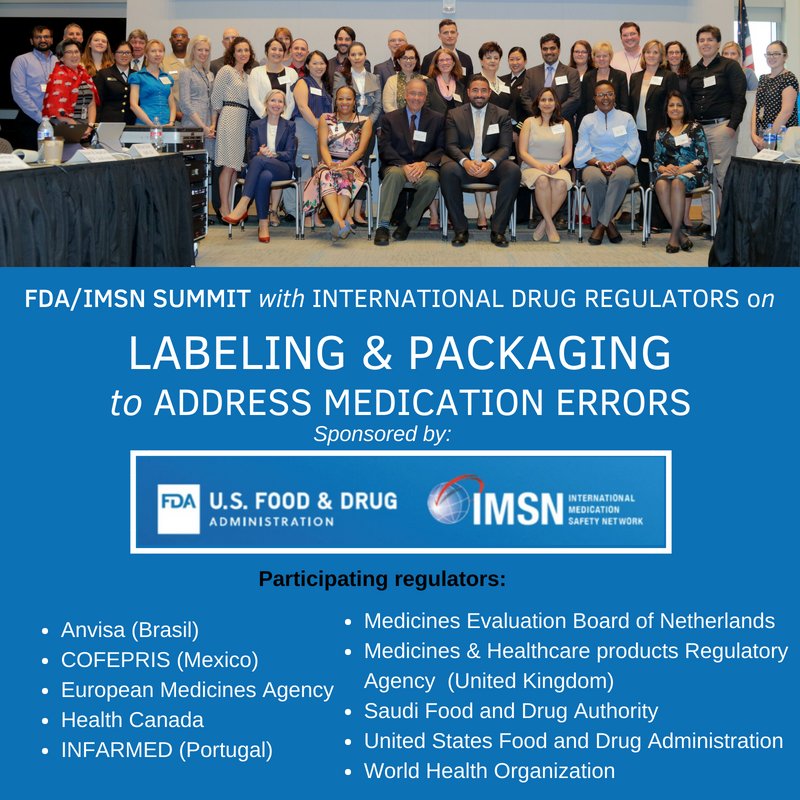 To reduce overall harm related to medication errors, harmonization at the global level is necessary. Many product containers exhibit labelling and packaging issues that contribute to errors in various countries. Also, domestic drug manufacturing does not exist in many countries, so drugs are commonly imported, often with features that can result in safety issues. Some international regulators have undertaken successful packaging and labelling changes that have reduced the risk of errors. The meeting provided an opportunity to share these experiences.
To reduce overall harm related to medication errors, harmonization at the global level is necessary. Many product containers exhibit labelling and packaging issues that contribute to errors in various countries. Also, domestic drug manufacturing does not exist in many countries, so drugs are commonly imported, often with features that can result in safety issues. Some international regulators have undertaken successful packaging and labelling changes that have reduced the risk of errors. The meeting provided an opportunity to share these experiences.
One of the goals of the meeting held on June 19 and 20, 2018, at the <strong>US Food and Drug Administration</strong> (FDA) White Oak (Silver Spring) campus in MD, was to create a minimum set of best practices for labelling and packaging aimed at reducing medication errors. Another goal was to promote the use of technologies to reduce medication errors, which led to discussions regarding the need for an international barcode standard. Representatives from GS1, a global standards organization for barcodes, were among the invited speakers.
Participants agreed that guidelines are needed regarding the presentation of critical label information to deal with look-alike labels, noting that logos and highly stylized graphics detract from readability of the label. They also suggested review of existing guidelines and consideration of the following best practices related to drug labelling and packaging:
- Include both the per mL and the per container quantity, not the per mL quantity alone, when presenting the concentration for injectables
- Use metric units for products, and eliminate ratio expressions
- Eliminate potentially error-prone abbreviations and dose designations on labels, such as U for units, IU for international units, or trailing zeros (e.g., 1.0) to express strength
- Prominently display cautionary statements on carton and immediate container labels of neuromuscular blockers, potassium chloride concentrate injection, methotrexate, and other selected error-prone medications
- Use contrasting label backgrounds for the printing on glass ampules, and recommend font size and label orientation, to improve readability
- Physically link or integrate diluents with drugs that are powders
- Increase the adoption of ready-to-use/ready-to-administer syringes, premixed IV solutions, unit-dose packaging, and other more efficient, safer packaging, while considering the overall cost of implementation
- Develop product-specific world safety standards; for example, standard packaging for non-oncologic methotrexate to prevent accidental daily use and overdoses
- Include barcodes on packages so they can be scanned at the bedside or other locations where medications are dispensed or administered by healthcare providers
A discussion was also held on the processing and sharing of medication error information by global pharmacovigilance (PV) centers. A recommendation was made for the PV centers to seek input from healthcare practitioners and medication/patient safety organizations such as those already established in many of the IMSN member countries. Finally, participants agreed to create a white paper to promulgate these best practices.
